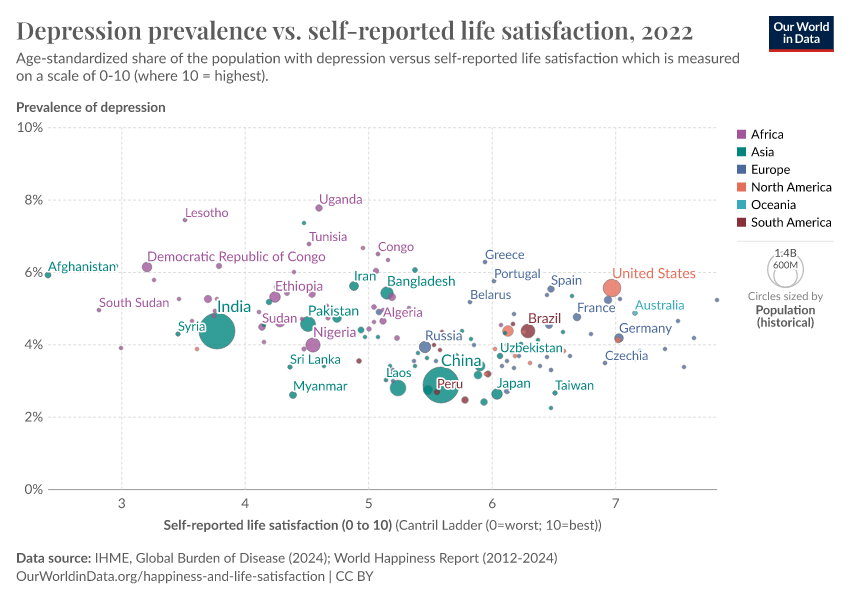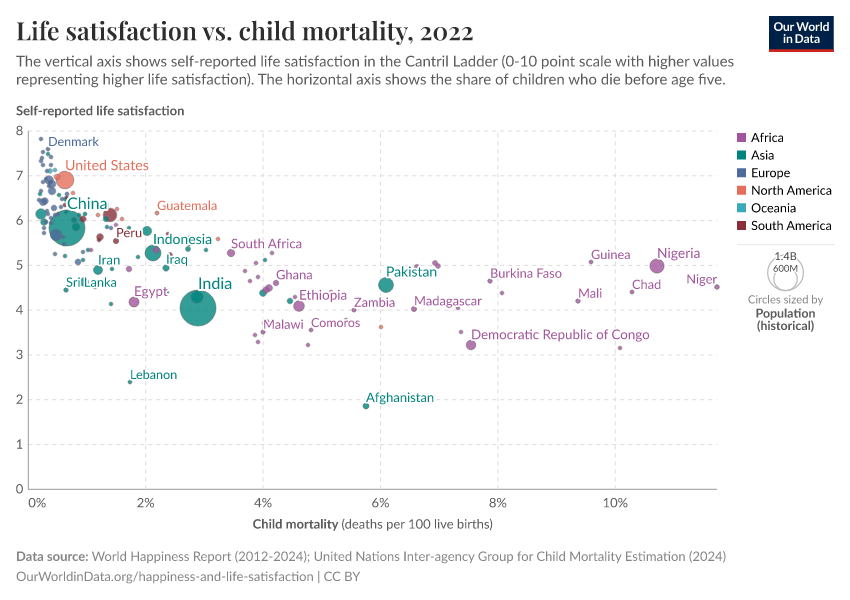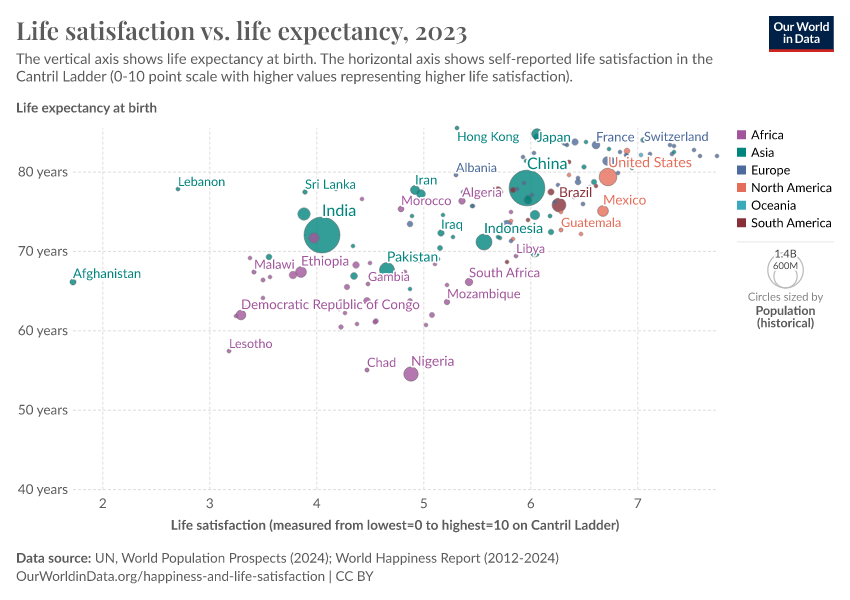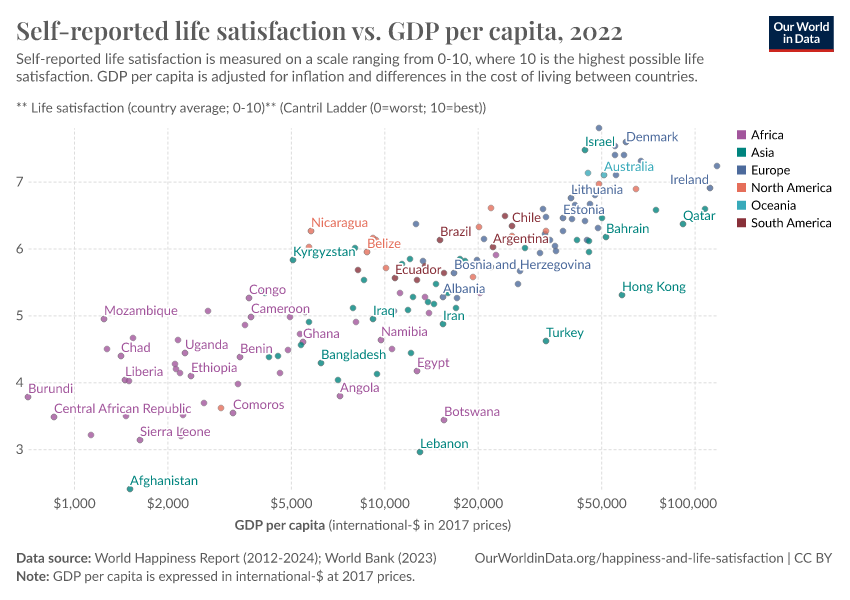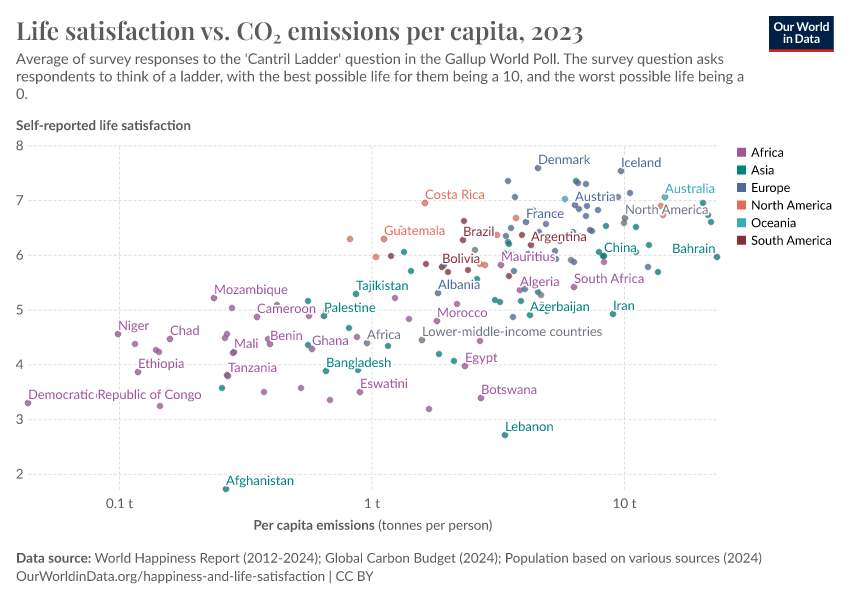Self-reported life satisfaction
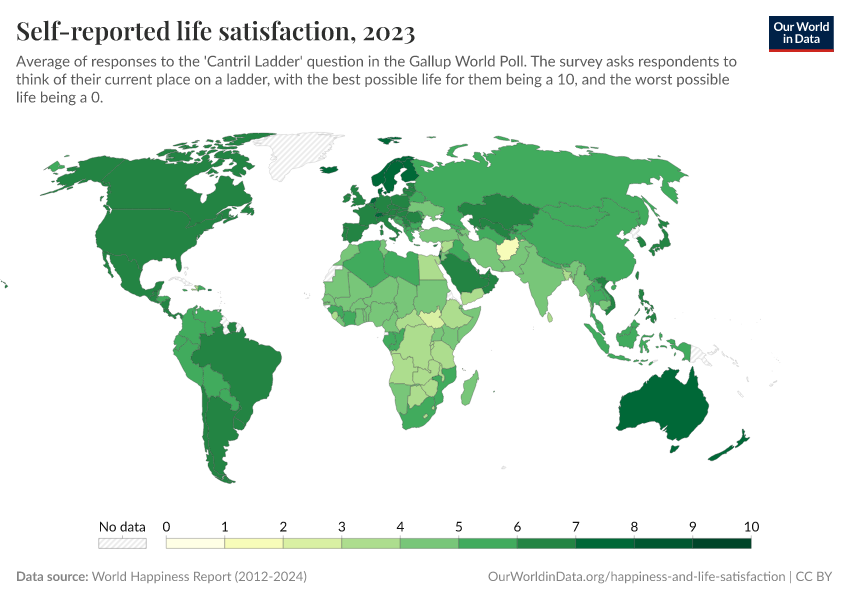
What you should know about this indicator
- The Cantril ladder asks respondents to think of a ladder, with the best possible life for them being a 10 and the worst possible life being a 0. They are then asked to rate their own current lives on that 0 to 10 scale.
- The rankings are calculated by the source based on nationally representative samples for the three years prior to the year of the report, so that data for the 2024 report will draw from survey data from 2021-2023. We show the data for final year of the three-year survey period, i.e. we show the 2021-2023 survey data as 2023.
- The only exception is the data for the 2012 report, which uses survey data from 2005-2011, we show this data as the final year of the survey data - 2011.
- The number of people and countries surveyed varies year to year, but typically more than 100,000 people in 130 countries participate in the Gallup World Poll each year.
- The rankings are based entirely on the survey scores, using the Gallup weights to make the estimates representative.
- The data is the compilation of all previous World Happiness Reports, which can be found at https://worldhappiness.report/archive/.
Related research and writing
Sources and processing
This data is based on the following sources
How we process data at Our World in Data
All data and visualizations on Our World in Data rely on data sourced from one or several original data providers. Preparing this original data involves several processing steps. Depending on the data, this can include standardizing country names and world region definitions, converting units, calculating derived indicators such as per capita measures, as well as adding or adapting metadata such as the name or the description given to an indicator.
At the link below you can find a detailed description of the structure of our data pipeline, including links to all the code used to prepare data across Our World in Data.
Notes on our processing step for this indicator
Average of regions is calculated by taking a population-weighted average over all countries within that region.
Reuse this work
- All data produced by third-party providers and made available by Our World in Data are subject to the license terms from the original providers. Our work would not be possible without the data providers we rely on, so we ask you to always cite them appropriately (see below). This is crucial to allow data providers to continue doing their work, enhancing, maintaining and updating valuable data.
- All data, visualizations, and code produced by Our World in Data are completely open access under the Creative Commons BY license. You have the permission to use, distribute, and reproduce these in any medium, provided the source and authors are credited.
Citations
How to cite this page
To cite this page overall, including any descriptions, FAQs or explanations of the data authored by Our World in Data, please use the following citation:
“Data Page: Self-reported life satisfaction”, part of the following publication: Esteban Ortiz-Ospina and Max Roser (2017) - “Happiness and Life Satisfaction”. Data adapted from Wellbeing Research Centre, Various sources. Retrieved from https://ourworldindata.org/grapher/happiness-cantril-ladder [online resource]How to cite this data
In-line citationIf you have limited space (e.g. in data visualizations), you can use this abbreviated in-line citation:
World Happiness Report (2012-2024) – with major processing by Our World in DataFull citation
World Happiness Report (2012-2024) – with major processing by Our World in Data. “Self-reported life satisfaction – WHR” [dataset]. Wellbeing Research Centre, “World Happiness Report 2024”; Various sources, “Population” [original data]. Retrieved March 10, 2025 from https://ourworldindata.org/grapher/happiness-cantril-ladder